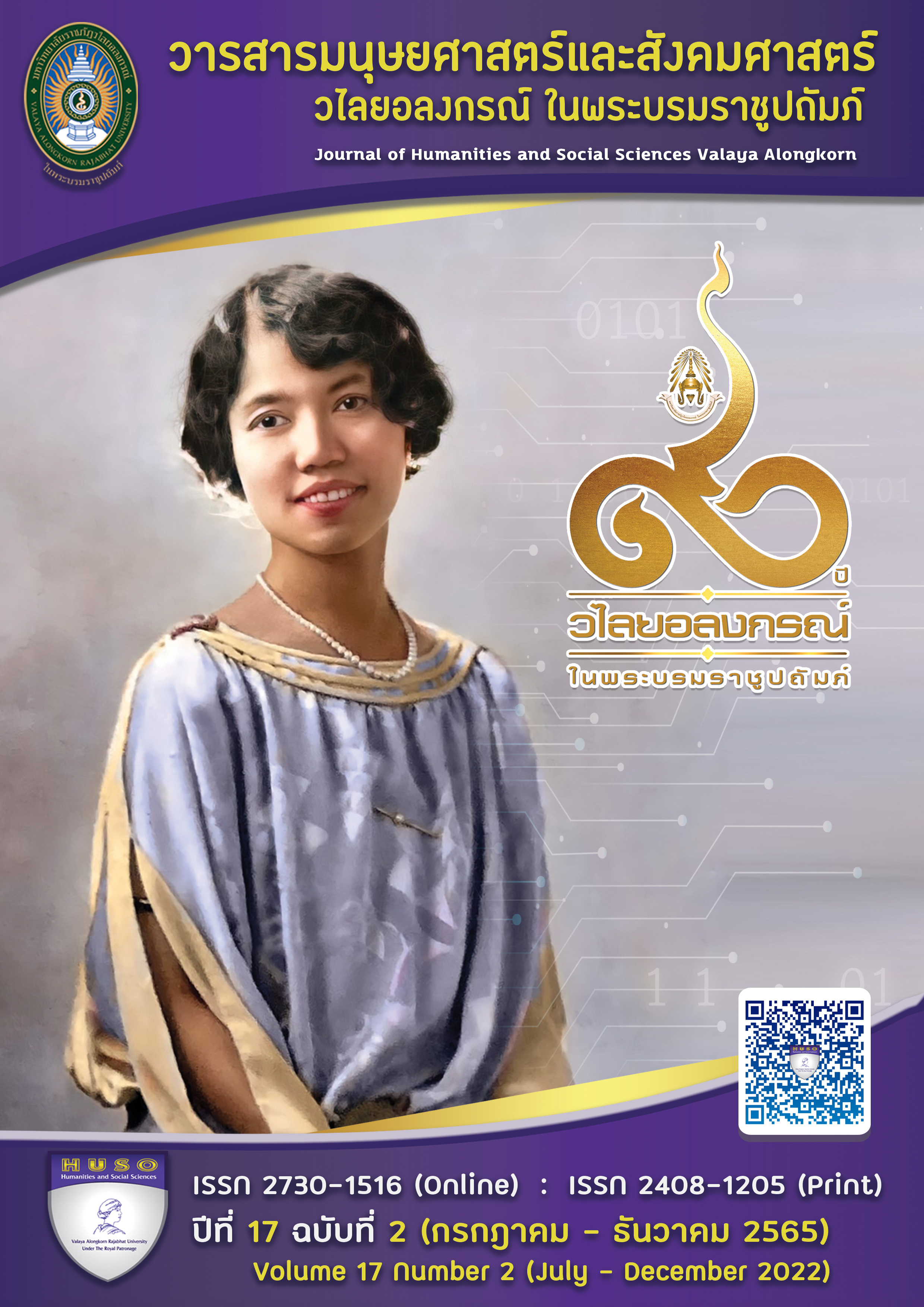ROLES OF TEACHERS IN HELPING CHILDREN WITH AUTISM AND THEIR FAMILIES
Main Article Content
Abstract
Autism Spectrum Disorder (ASD) has an impact on children’s adaptation to school. Furthermore, policies and laws regarding the educational provision for people with ASD are directly related to teachers who are part of the educational personnel. Teachers therefore play an important role in assisting students with ASD and their families. This article aims to gather information on the roles and responsibilities of a teacher in terms of roles in assisting students with autism, knowledge and understanding of ASD, guidelines on educational provision that are suitable for students of all ability levels and their individual needs, ways to deal with problematic behaviors, as well as classroom adjustment to support autistic students. It also includes help for families and parents of children with autism, since a family is a primary unit that plays an important role in caring for autistic children and improving their development. Furthermore, this article aims to provide teachers with useful information and guidelines to help support students with ASD and their families.
Article Details

This work is licensed under a Creative Commons Attribution-NonCommercial-NoDerivatives 4.0 International License.
ลิขสิทธิ์บทความวิจัยที่ได้รับการตีพิมพ์เผยแพร่ในวารสารมนุษยศาสตร์และสังคมศาสตร์ วไลยอลงกรณ์ ในพระบรมราชูปถัมภ์ ถือเป็นกรรมสิทธิ์ของคณะมนุษยศาสตร์และสังคมศาสตร์ มหาวิทยาลัยราชภัฏวไลยอลงกรณ์ ในพระบรมราชูปถัมภ์ ห้ามนำข้อความทั้งหมดหรือบางส่วนไปพิมพ์ซ้ำ เว้นแต่จะได้รับอนุญาตจากมหาวิทยาลัยเป็นลายลักษณ์อักษร
ความรับผิดชอบ เนื้อหาต้นฉบับที่ปรากฏในวารสารมนุษยศาสตร์และสังคมศาสตร์ วไลยอลงกรณ์ ในพระบรมราชูปถัมภ์ เป็นความรับผิดชอบของผู้นิพนธ์บทความหรือผู้เขียนเอง ทั้งนี้ไม่รวมความผิดพลาดอันเกิดจากเทคนิคการพิมพ์
References
ดารณี อุทัยรัตนกิจ. (2544). การศึกษาสาเหตุของปัญหานักเรียนและแนวทางการแก้ไขปัญหาในห้องเรียน.
เดอะมาสเตอร์กรุ๊ป แมเนจเม้นท์.
ทวีศักดิ์ สิริรัตน์เรขา. (2550). การบำบัดทางเลือกในเด็กพิเศษ. โรงพิมพ์คุรุสภาลาดพร้าว.
นันทวัช สิทธิรักษ์ และคณะ. (2559). จิตเวชศิริราช DSM-5 (พิมพ์ครั้งที่ 3). ภาควิชาจิตเวช.
พระราชบัญญัติการจัดการศึกษาสำหรับคนพิการ พ.ศ. 2551
พระราชบัญญัติส่งเสริมและพัฒนาคุณภาพชีวิตคนพิการ พ.ศ. 2550
มาโนช หล่อตระกูล และคณะ. (2558). จิตเวชศาสตร์ รามาธิบดี. (พิมพ์ครั้งที่ 4). ภาควิชาจิตเวชศาสตร์
คณะแพทยศาสตร์โรงพยาบาลรามาธิบดี.
สถาบันราชานุกูล. (2554). เมื่อลูกรักออทิสติกไปโรงเรียน คู่มือสำหรับผู้ปกครอง. บียอนด์ พับลิสซิ่ง.
สถาบันราชานุกูล. (2557). เด็กออทิสติก คู่มือสำหรับครู. โรงพิมพ์ชุมนุมสหกรณ์การเกษตรแห่งประเทศไทย.
สมพร หวานเสร็จ. (2552). การพัฒนาศักยภาพบุคคลออทิสติกโดยใช้สื่อสนับสนุนการเรียนรู้ผ่านการมอง.
โรงพิมพ์คลังนานาวิทยา.
อุมาพร ตรังคสมบัติ. (2550). ช่วยลูกออทิสติก. (พิมพ์ครั้งที่ 2). ซันต้าการพิมพ์.
Early Childhood Connection. IFSP. [Online], Available: www.rycf.org. (18 November 2022).
Faherty, C. (2000). Asperger’s … What Does It Mean To Me?: A Workbook
Explaining Self Awareness and Life Lessons to the Child or Youth with High Function Autism or Aspergers Structured Teaching Ideas for Home and School. Arlington: Future Horizons.
Filipek et al. (2000). Practice parameter: Screening and diagnosis of autism.
Report of the quality standards subcommittee of the American Academy of
Neurology and the Child Neurology Society. Neurology, 55(4), 468-479.
https://doi.org/10.1212/WNL.55.4.46
Ginson, H. (1995). The process of empowerment in mothers of chronically ill
children. Journal of Advanced Nursing. (21)6.
https://onlinelibrary.wiley.com/doi/abs/10.1046/j.1365-2648.1995.21061201.x
Gray, C. (2000). The New Social Story Book. Arlington: Future Horizons.
Hanson, M. & Odom, S. (1999). “Can I play with you?” Peer culture in inclusive
preschool programs. Journal for the Association of Persons with Severe Handicaps.
(2), 69–84.
Heward, W. L. (2000). Exceptional Children. An Introduction of Special
Education. USA: Prentice-Hall.
Koh, H. (2013). Peer-mediated inference making intervention for students with
autism spectrum disorders.
Larkey, S. (2005). Making it a success: Practical strategies and worksheets for
teaching Students with autism spectrum disorder. Philadelphia:
Jessica Kingsley.
Losh, Eisenhower, Blacher. (2022). Impact of student-teacher relationship quality
on classroom behavioral engagement for young students on the autism spectrum. Research in Autism Spectrum Disorders Volume 98. https://www.sciencedirect.com/science/article/abs/pii/S1750946722001143
McArthur, D. & Adamson, L. B. (1996). Joint attention in preverbal children:
Autism and developmental language disorders. Journal of Autism and
Developmental Disorders. 26(2): 481–496.


